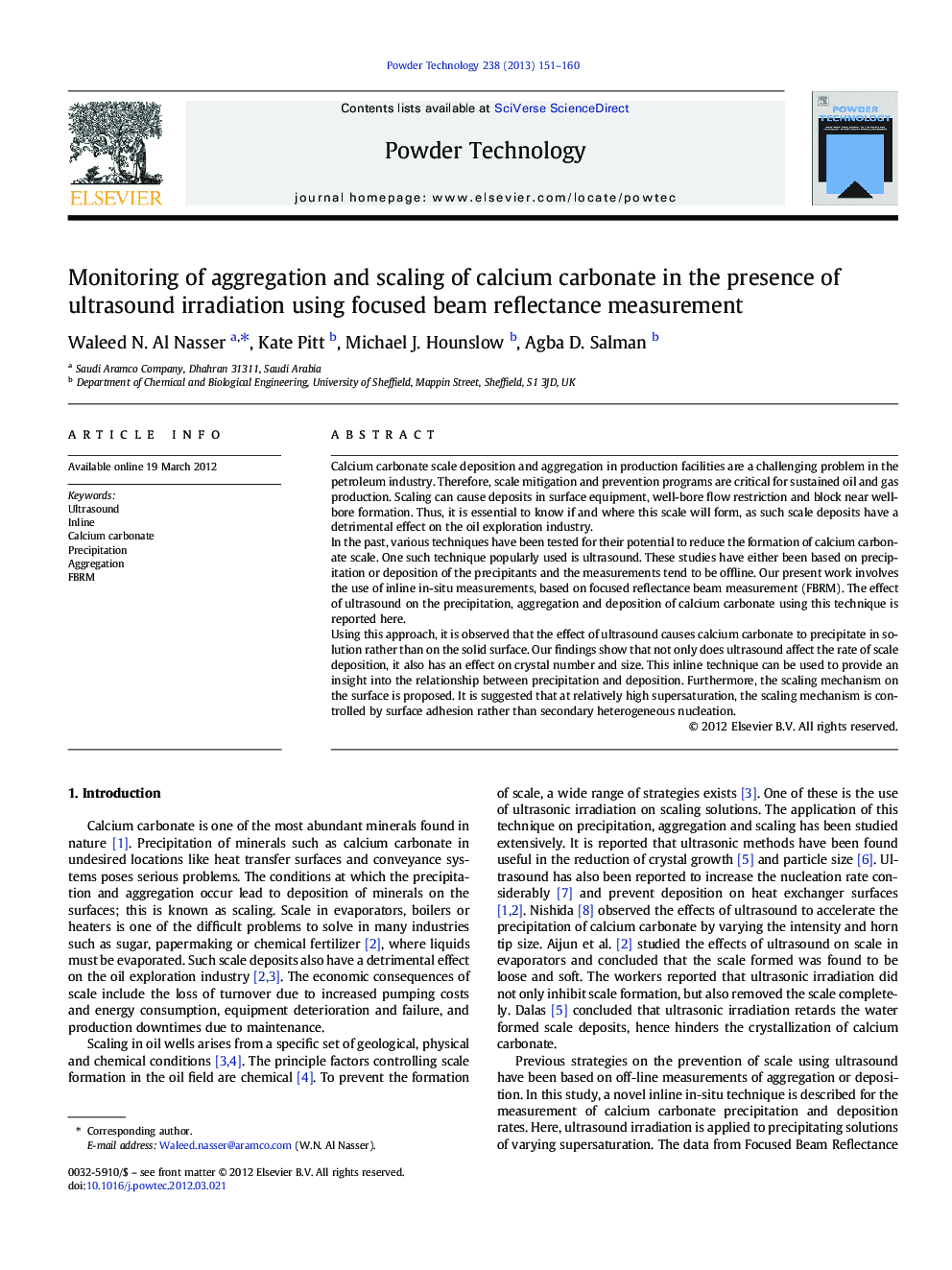| Article ID | Journal | Published Year | Pages | File Type |
|---|---|---|---|---|
| 236726 | Powder Technology | 2013 | 10 Pages |
Calcium carbonate scale deposition and aggregation in production facilities are a challenging problem in the petroleum industry. Therefore, scale mitigation and prevention programs are critical for sustained oil and gas production. Scaling can cause deposits in surface equipment, well-bore flow restriction and block near well-bore formation. Thus, it is essential to know if and where this scale will form, as such scale deposits have a detrimental effect on the oil exploration industry.In the past, various techniques have been tested for their potential to reduce the formation of calcium carbonate scale. One such technique popularly used is ultrasound. These studies have either been based on precipitation or deposition of the precipitants and the measurements tend to be offline. Our present work involves the use of inline in-situ measurements, based on focused reflectance beam measurement (FBRM). The effect of ultrasound on the precipitation, aggregation and deposition of calcium carbonate using this technique is reported here.Using this approach, it is observed that the effect of ultrasound causes calcium carbonate to precipitate in solution rather than on the solid surface. Our findings show that not only does ultrasound affect the rate of scale deposition, it also has an effect on crystal number and size. This inline technique can be used to provide an insight into the relationship between precipitation and deposition. Furthermore, the scaling mechanism on the surface is proposed. It is suggested that at relatively high supersaturation, the scaling mechanism is controlled by surface adhesion rather than secondary heterogeneous nucleation.
Graphical abstractThis research is focused on understanding the behavior of calcium carbonate agglomeration and deposition in the presence and absence of ultrasonic irradiation. The novelty of this work is that an inline monitoring technique (FBRM) is utilized to obtain real time data. It was found that number of particles is dramatically increased in the presence on ultrasound.Figure optionsDownload full-size imageDownload as PowerPoint slide
